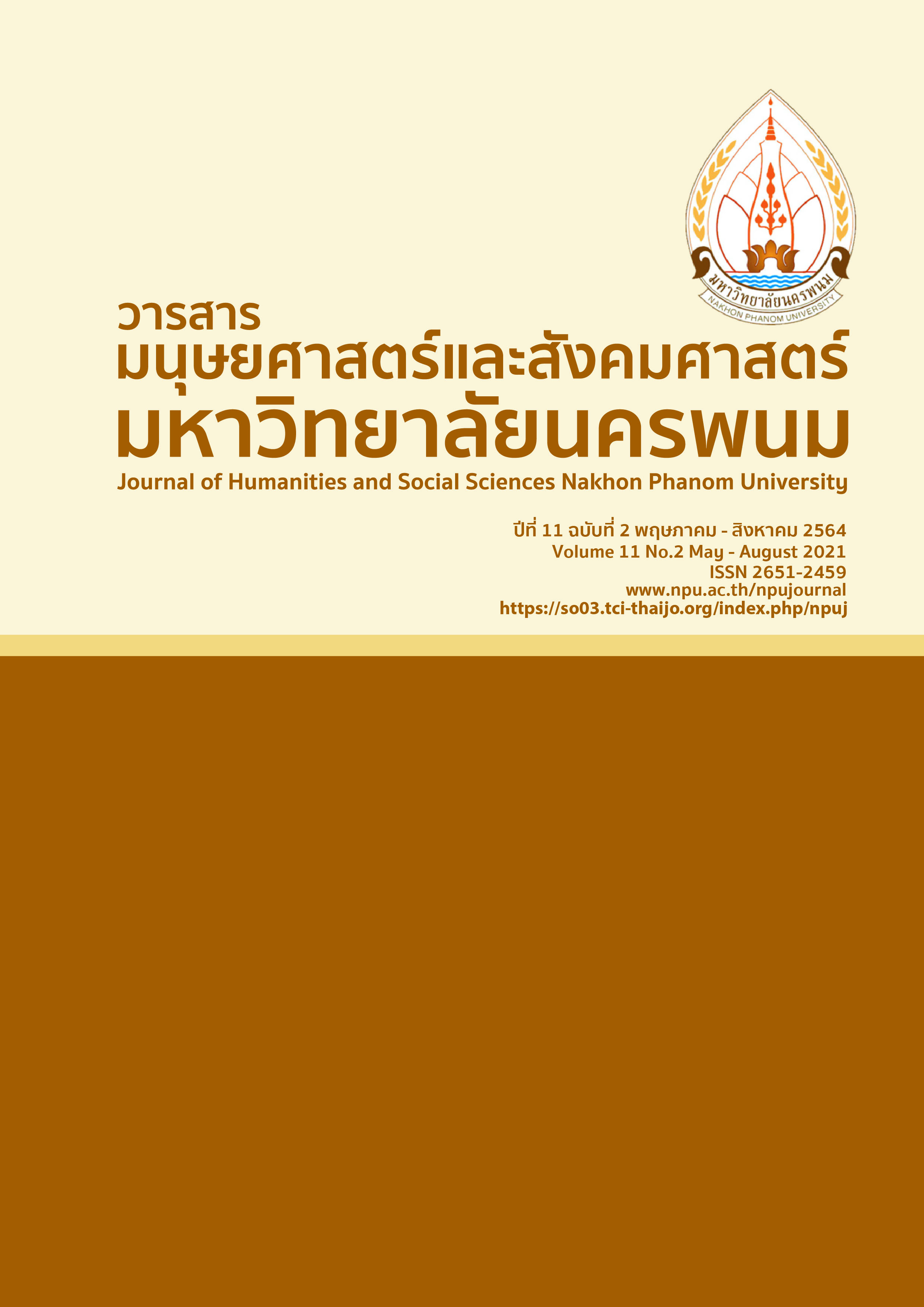High Performance Workforce Management Model in Thailand Garment Industry
Main Article Content
Abstract
The objectives of this research were to investigate the level of dynamic learning, job design, competency-based compensation, employee involvement, relational trust, high-performance workforce and the confirmation of a high-performance workforce management model in the Thai garment industry. The Likert five scale questionnaire was conducted on 200 sample staff supervisors. The statistical techniques consisted of 1) descriptive statistics: mean, standard deviation, and coefficient of variation, 2) inferential statistics: structural equation model and factor analysis for second-order reduction. The results showed that dynamic learning, job design, and competency-based compensation influence to high-performance workforce with values 0.23, 0.26, and 0.21 respectively. Moreover, relational trust had more substantial influence than employee involvement. To enhance employees' knowledge and creativity thinking, the business should apply new technology with training techniques. Additionally, job design and competency-based policy should also be improved to speed up for a high-performance workforce to support competitive advantage.
Article Details
References
Al Smirat, B.Y. (2016). Cash Management Practices and Financial Performance of Small and Medium Enterprises (SMEs) in Jordan. Journal of Finance and Accounting, Corpus ID: 54628840.
Breaugh, J., Ritz, A. & Alfes, K. (2018). Work motivation and public service motivation: disentangling varieties of motivation and job satisfaction. Journal of Public Management Review, 20(10), 1423-1443.
Cui, Y., Zhang, X., Peng, X. and Chu, J. (2018). How to use apology and compensation to repair competence-versus integrity-based trust violations in e-commerce. Electronic Commerce Research and Applications. 32,37-48.
Devasheesh, P.B. and Theresa, M.G. (2016). The Role of Occupational Emotional Labor Requirements on the Surface Acting–Job Satisfaction Relationship. SAGE journals. 42(3),722-741.
Escribá-Carda, N., Balbastre-Benavent, F. and Canet-Giner, M.T. (2017). Employees' perceptions of high-performance work systems and innovative behavior: The role of exploratory learning. European Management Journal. 35(2),273-281.
Garcia, H., Gardoo, T. and Garcia, J. (2018). SMEs Dynamic Learning Capability in international public procurement. Journal of modern project management, 14-23. DOI: 19255/JMPM01502.
Hair, J., Anderson, R., Tatham, R.L. and Black, W.C. (2006). Multivariate data analysis. 5th ed. NJ : Upper Saddle River, Prentice-Hall.
Kumar, V. & Pansari, A. (2016). Competitive Advantage through Engagement. Journal of Marketing Research. 53(4),497-514.
Kunnel, A., and Quandt, T. (2016). Relational Trust and Distrust: Ingredients of Face-to-Face and Media-based Communication. In: Blöbaum B. (eds) Trust and Communication in a Digitized World. Progress in IS. Springer, Cham.
Melissa, M., Christine, P. & Katherine, B. (2016). Creating Dynamic Learning Communities in Synchronous Online Courses: One Approach from the Center for the Integration of Research, Teaching and Learning (CIRTL). ERIC Journal. 20(1),110-129.
Moolman, H. (2017). A conceptual competence-based framework for enhancing the employability of graduates. The Independent Journal of Teaching and Learning. 12(2),26-43.
Nadiv, R., Raz, A. and Kuna, S. (2017). What a difference a role makes: Occupational and organizational characteristics related to the HR strategic role among human resource managers. Employee Relations Journal. 39(7),1131-1147.
National Quality Award. (2019). Kēn rāngwan khunnaphāp hǣng chāt [National Criteria for Quality Award]. Bangkok : National Quality Award Office.
Nurjannah, N., Solimun, S., Raharjo, K. and Achmad Rinaldo Fernandes, A. (2018). The influence of organizational culture and job design on job commitment and human resource performance. Journal of Organizational Change Management. 31(7),1346-1367.
Obeidat, S.M., Mitchell, R. & Bray, M. (2016). The link between high performance work practices and organizational performance: Empirically validating the conceptualization of HPWP according to the AMO model. Employee Relations Journal. 38(4),578-595.
Office of the National Economic and Social Development Board. (2019). ʻUtsāhakam sing thō̜ læ khrư̄ang nunghom [Textile and Garment industry]. Retrieved November 2019, from https://www.gsb. or.th/getattachment/269defed-c0bc-4d2f- 8d04-365608ef9d74/4
Oldham, G.R. and Fried, Y. (2016). Job design research and theory: Past, present and future. Organizational Behavior and Human Decision Processes. 136,20-35.
Poppo, L., Zhou, K.Z., and Li, J.J. (2016). When can you trust “trust”? Calculative trust, relational trust, and supplier performance. Strategic Management Journal. 37(4),724-741.
Qi, F. and Wang, W. (2018). Employee involvement, public service motivation, and perceived organizational performance: testing a new model. SAGE journals. 84(4),746-764.
Reid, W. & Karambayya, R. (2016). The shadow of history: Situated dynamics of trust in dual executive leadership. SAGE journals. 12(5),609-631.
Saastamoinen, J., Reijonen, H. and Tammi, T. (2017). The role or training in dismantling barriers to SME participation in public procurement. Journal of Public Procurement. 17(1),1-30.
Saunila, M. and Mäkimattila, M. (2018). A Dynamic Learning Perspective on Innovation Control: Balancing Freedom and Constraint. In: Vrontis D., Weber Y., Thrassou A., Shams S., Tsoukatos E. (eds) Innovation and Capacity Building. Palgrave Studies in Cross-disciplinary Business Research, In Association with EuroMed Academy of Business. Palgrave Macmillan, Cham.
Singh, U. and Kailash, B.L. (2016). Organizational Trust and Organizational Citizenship Behaviour. SAGE journals. 17(3),594-609.
Steijvers, T., Lybaert, N. and Dekker, J. (2017). Formal human resource practices in family firms. Journal of Family Business Management. 7(2),151-165.
Thai Garment Manufacturets Association. (2019). Dairēk thō̜rī sō̜ngphansippǣt - sō̜ngphanyīsip [DIRECTORY 2018-2020]. Bangkok : Thai Garment Manufacturets Association.
Vandenberg, R. J. (2006). Statistical and Methodological Myths and Urban Legends. Organizational Research Methods. 9(2), 194-201.
Wallace, J.C., Marcus, M.B. and Paul, D.J. (2016). A Multilevel Model of Employee Innovation: Understanding the Effects of Regulatory Focus, Thriving, and Employee Involvement Climate. SAGE journals. 42(4),982-1004.
Westland, J. C. (2010). Lower bounds on sample size in structural equation modeling. Electronic Commerce Research and Applications. 9(6),476-487.


